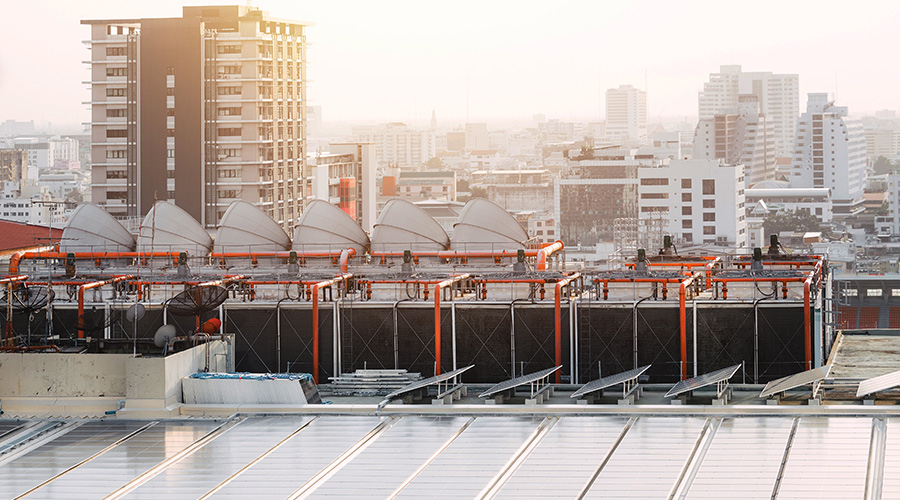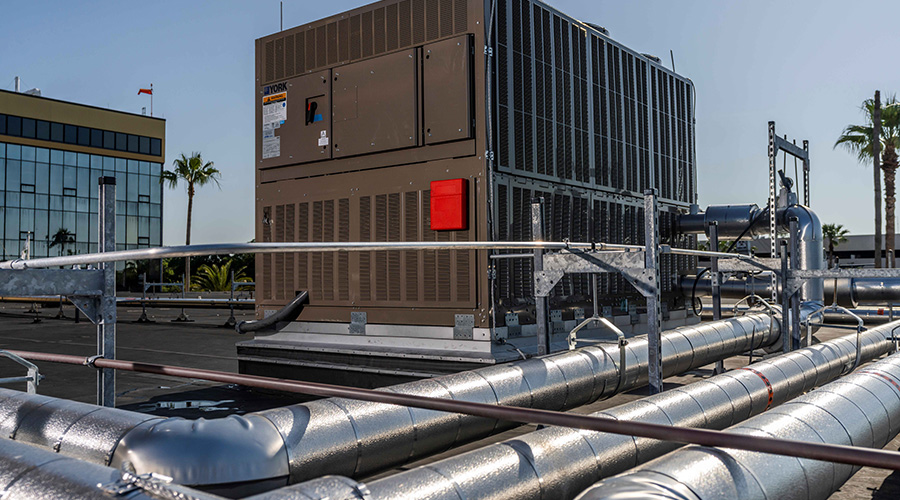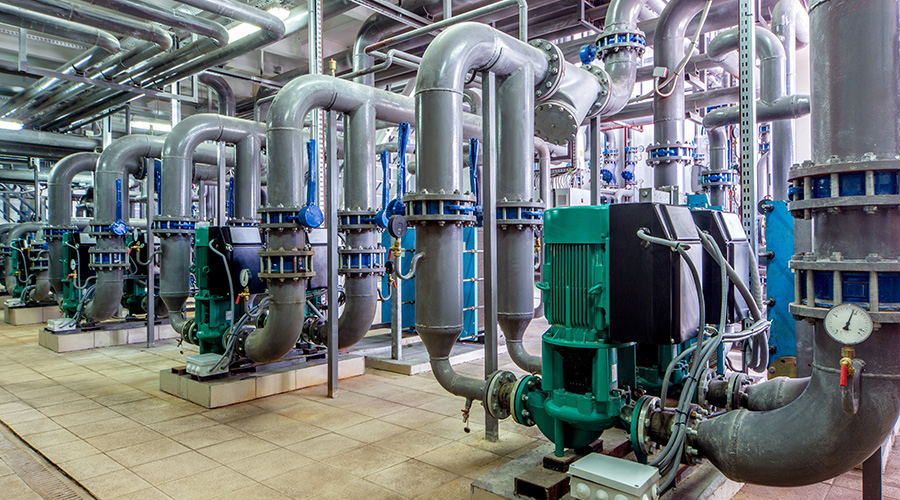Good Water Treatment Program Improves Chiller Efficiency
While many common trouble areas can affect chiller performance, perhaps the biggest culprit is contamination of the chiller's heat-transfer surfaces. A chiller's efficiency and performance depend heavily on its ability to transfer heat efficiently. To do so, operators must keep heat-transfer surfaces clean.
If a chiller's tubes become coated or plugged with scale, sludge, or biological growth, their ability to transfer heat drops significantly. The rate at which this fouling occurs depends greatly on the water quality in the system, but even a thin layer of contamination can reduce overall efficiency significantly.
All chiller circulating and makeup water contains contaminants. Chemically treating the water helps prevent this accumulation of contaminants on heat-transfer surfaces. Open systems, such as condenser-water systems, that include a cooling tower require an ongoing program of chemical water treatment. Closed systems typically require only a one-time chemical treatment.
Managers should not enter chemical-treatment programs lightly. To be effective, the programs must introduce the proper mix and concentration of chemicals. Levels that are too low or do not match the conditions found will be ineffective. The wrong chemicals or concentrations that are too high can damage internal components. In most cases, managers should work with a chemical-treatment vendor who is familiar with the chiller system and with the quality of the water at that site. Once set up, operators will have to monitor programs regularly to ensure the program's effectiveness.
Even with a good water treatment program, it will still be necessary to perform a cleaning of the chiller's condenser tubes. Using a brush, the annual cleaning can remove accumulations of sludge, biological growth, and any loose materials. If there is an accumulation of scale on the tubes, it generally will have to be removed through a chemical cleaning process. Most manufacturers recommend that this tube cleaning process be completed on an annual basis.
Tracking Performance
One of the simplest yet most often overlooked elements in chiller maintenance programs is the operating log. A typical chiller operating log includes regularly recorded data that tracks chiller performance, condenser-water supply and return temperatures, chilled-water supply and return temperatures, evaporator and condenser pressures, oil temperature and pressure, and drive-motor current and voltage.
Recording this data at least daily gives operators a historical record of a chiller's operating conditions, which they can use to compare actual performance with design values. Deviations from design values might indicate improper control set points or developing problems. Similarly, tracking the data over time can provide valuable information on trends in performance — often an early warning of developing problems.
Chiller operating logs also should include routine and breakdown maintenance technicians perform on the chiller. By tracking this information, managers can determine if maintenance costs and requirements are increasing to the point where a complete overhaul is necessary or if it might be more cost-effective to replace the chiller instead of continuing with increasing maintenance costs. For the log to be effective, it is important that technicians make regular data entries. It is equally important that someone reviews the data regularly and acts accordingly.
Related Topics:














